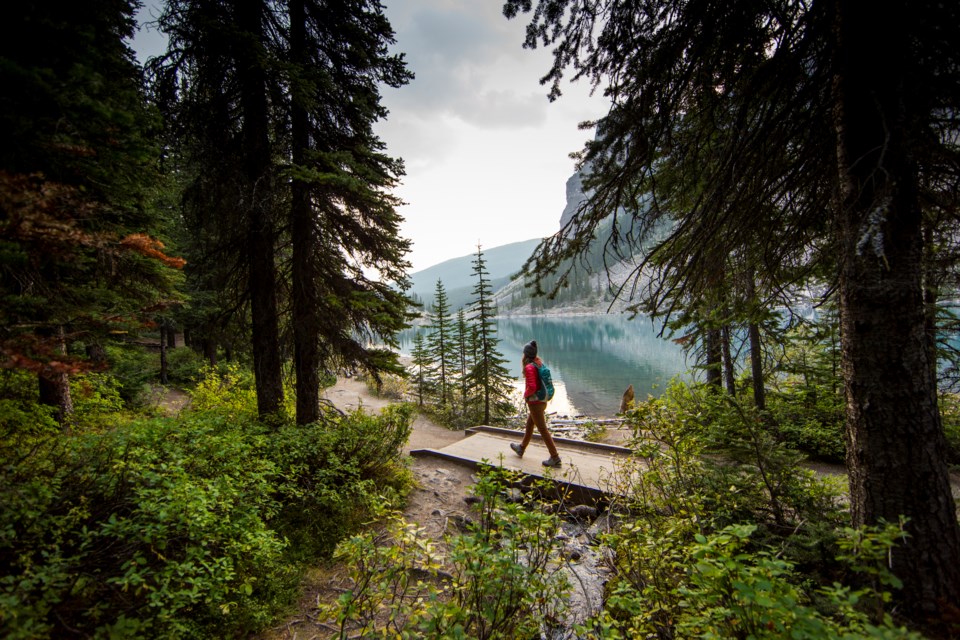Since making the move to Squamish a little over a month ago, I have spent a good chunk of my free time exploring my lovely new hometown. And seeing as I don’t drive and there’s still no transit to speak of, the majority of my wanderings have been on foot, my usual preferred mode of travel.
After living in Whistler for nearly a decade, I thought I had a pretty good handle on my southerly Sea to Sky neighbour, but the truth is you can never truly know a place until you’ve taken it in by foot. All of a sudden, the Squamish I thought I knew opened up to a world of awe-inspiring trails and quirky character homes I wouldn’t have noticed had I been gawking out the window of a car.
In his aptly titled 2019 book, Walking: One Step at a Time, explorer and publisher Erling Kagge pontificates on the intrinsic value of one of humankind’s original travel methods and pastimes—and he would know. The Norwegian native is the first person to complete the Three Poles Challenge on foot, walking unsupported to both the North and South Poles, along with Mount Everest, the so-called “third pole.” His expeditions aren’t always so grand, however. In 2010, he and historian and photographer Steve Duncan ventured into the sewers of New York City, walking the mucky, subterranean depths over five days from the Bronx to the shore of the Atlantic Ocean. Two years later, he joined two friends to walk the full length of Sunset Boulevard in Los Angeles—a notoriously unwalkable city—over three days. In late 2019, he again joined a group of friends to walk the entirety of Broadway in New York, from Sleepy Hollow to the far end of Manhattan, in just 24 hours.
In his writings, Kagge discusses the many obvious and not-so-obvious benefits associated with walking: it does wonders for our physical and mental health, helping to improve mood, concentration and creativity, and fosters deeper and more meaningful connections to ourselves and our wider community.
But Kagge seems less concerned with the effects of walking than the deeper questions around why we walk in the first place. Besides, there are plenty of books out there already highlighting these practical benefits. Like so much in today’s overly corporatized self-help realm, walking is often extolled for the ways it makes us more efficient, better problem solvers, a sort of quick and handy shortcut to achieving full optimization. Hell, even Kagge talks about how tech firms in Silicon Valley are increasingly holding “walking meetings” because they’ve shown to resolve pesky issues faster than traditional boardroom meetings.
“To walk is something much larger than a list of advantages you can read in an ad for vitamins,” Kagge writes. “Why do we walk? Where do we walk from and what is our destination? We all have our own answers. Even if you and I walk next to each other, we can experience the walk differently.”
Walking, at its simplest, is wandering, the first physical manifestation of our inherent drive to explore and discover.
“Journeys of discovery are not something you start doing, but something you gradually stop doing,” Kagge so rightly puts it.
For much of human existence, walking was the primary method we used to get from Point A to B, whether that was a nearby fishing hole or an entirely new continent altogether, and if it had not been for that capability, Homo sapiens as a species would not have evolved the way we did—“We would have crawled around without the languages we have today,” Kagge says.
Even through modern history, the simple pleasures of walking seemed to hold more sway in society than they do today. The romantic notion of the flâneur—translating loosely to “stroller,” “lounger,” “saunterer” or “loafer”—was such a well-known character in 19th-century Paris that it essentially became a cultural trope all its own, with the flâneur, or boulevardier, as they were also called, held up variously as men of leisure (a passant was the common term for women strollers), street scholars and urban explorers.
It’s difficult to imagine someone engaged in that kind of aimless meandering today being viewed in the same way, but maybe it’s time we do. One of the side effects of the pandemic has been the thousands of people who have rediscovered the joys of walking, when simply going out for a stroll became more about necessity than self-improvement. But walking shouldn’t always come with some goal or perceived benefit attached to it. After all, the best trips aren’t about the destination at all, but the journey to get there.




